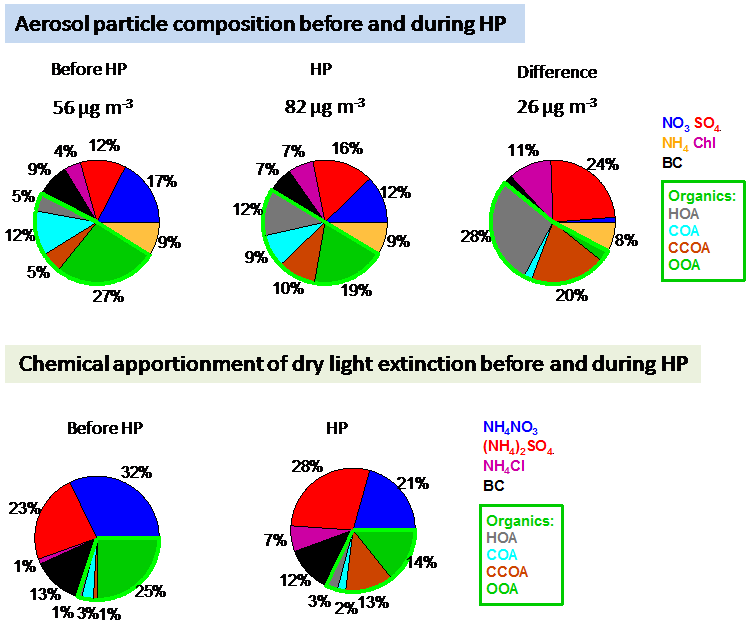
Despite extensive efforts into characterization of the sources and formation mechanisms of severe haze pollution in the megacity of Beijing, the response of aerosol composition and optical properties to coal combustion emissions in the heating season remain poorly understood. For these reasons, Dr. WANG Qingqing and Dr. SUN Yele from Institute of Atmospheric Physics, Chinese Academy of Sciences, and their collaborators conducted a three-month real-time measurement of submicron aerosol (PM1) composition by an Aerosol Chemical Speciation Monitor and particle light extinction by a Cavity Attenuated Phase Shift extinction monitor in Beijing, China from 1 October to 31 December 2012.
They also observed great increases of hydrocarbon-like OA (HOA) and coal combustion OA (CCOA) during HP. SUN explained, “It was attributed to higher emissions at lower temperatures and coal combustion emissions, respectively.”

Figure 1. Top panel: average chemical composition of PM1 before and during heating period (HP); Bottom panel: average contributions of chemical species to extinction coefficients (bext) before and during HP. COA and OOA refer to cooking organic aerosol and oxygenated organic aerosol, respectively. (Figure plotted by IAP)
The relationship between light extinction and chemical composition was also investigated using a multiple linear regression model. Their results showed that the largest contributor to particle extinction was ammonium nitrate (32%) and ammonium sulfate (28%) before and during HP, respectively.
In addition, the contributions of SOA and primary OA to particle light extinction were quantified. The results showed that the OA extinction was mainly caused by SOA before HP, and by SOA and CCOA during HP, yet with small contributions from HOA and cooking aerosol for the entire study period.
The study elucidates substantial changes of aerosol composition, formation mechanisms, and optical properties due to coal combustion emissions and meteorological changes in the heating season.

86-10-68597521 (day)
86-10-68597289 (night)

52 Sanlihe Rd., Xicheng District,
Beijing, China (100864)

